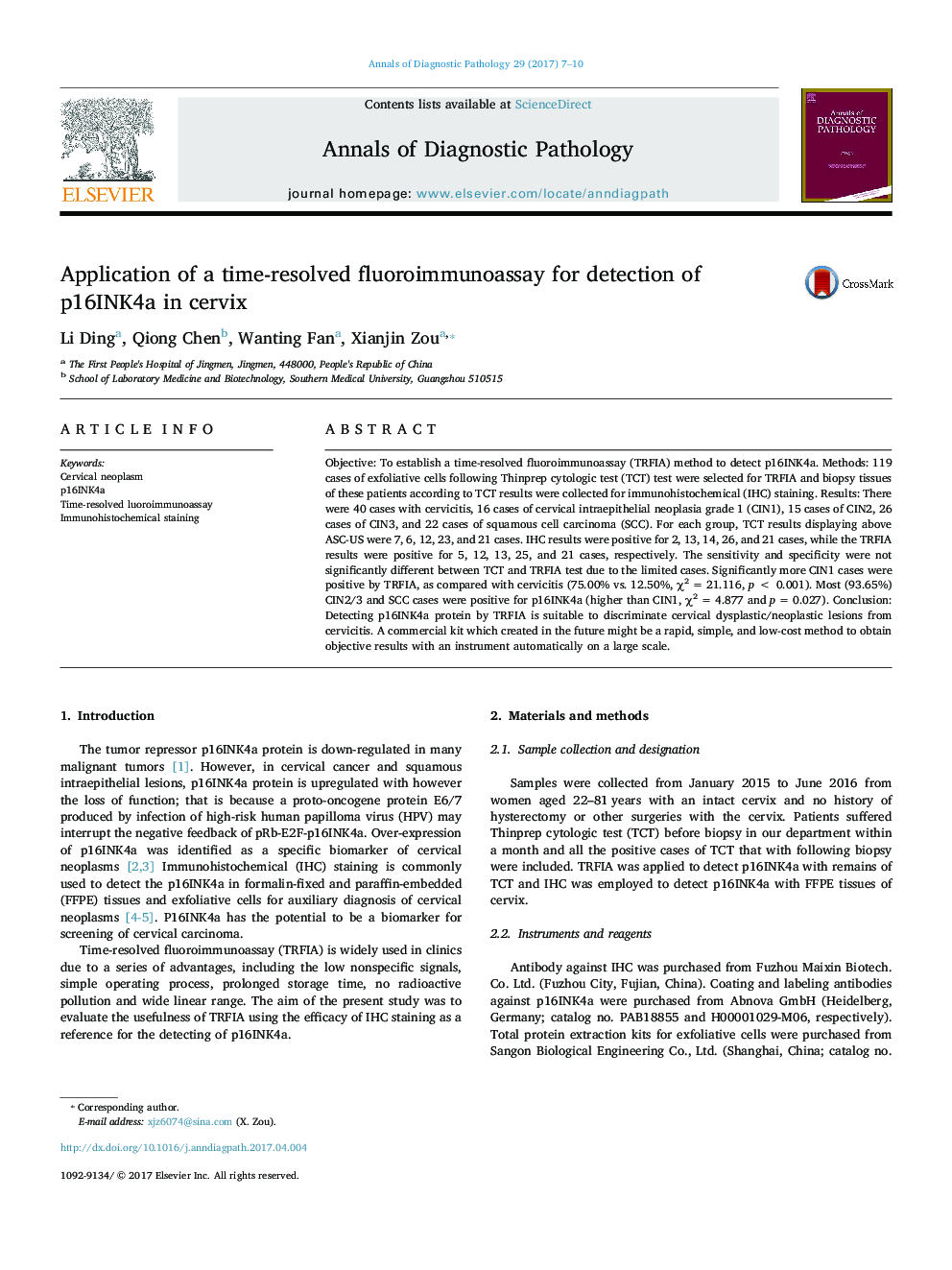| Article ID | Journal | Published Year | Pages | File Type |
|---|---|---|---|---|
| 5715840 | Annals of Diagnostic Pathology | 2017 | 4 Pages |
â¢Time-resolved fluoroimmunoassay (TRFIA) is a non-isotope immunoassay technology for analysis of trace molecules. It is a method with high specificity with time decay and interference of wavelength. In this study, a TRFIA was applied to establish a new method for detecting of p16INK4a protein in cervical exfolitive cell.â¢Results showed that it is a potential good method for screening of cervical neoplasm on account of the satisfactory sensitivity and specificity.
Objective: To establish a time-resolved fluoroimmunoassay (TRFIA) method to detect p16INK4a. Methods: 119 cases of exfoliative cells following Thinprep cytologic test (TCT) test were selected for TRFIA and biopsy tissues of these patients according to TCT results were collected for immunohistochemical (IHC) staining. Results: There were 40 cases with cervicitis, 16 cases of cervical intraepithelial neoplasia grade 1 (CIN1), 15 cases of CIN2, 26 cases of CIN3, and 22 cases of squamous cell carcinoma (SCC). For each group, TCT results displaying above ASC-US were 7, 6, 12, 23, and 21 cases. IHC results were positive for 2, 13, 14, 26, and 21 cases, while the TRFIA results were positive for 5, 12, 13, 25, and 21 cases, respectively. The sensitivity and specificity were not significantly different between TCT and TRFIA test due to the limited cases. Significantly more CIN1 cases were positive by TRFIA, as compared with cervicitis (75.00% vs. 12.50%, Ï2 = 21.116, p < 0.001). Most (93.65%) CIN2/3 and SCC cases were positive for p16INK4a (higher than CIN1, Ï2 = 4.877 and p = 0.027). Conclusion: Detecting p16INK4a protein by TRFIA is suitable to discriminate cervical dysplastic/neoplastic lesions from cervicitis. A commercial kit which created in the future might be a rapid, simple, and low-cost method to obtain objective results with an instrument automatically on a large scale.
